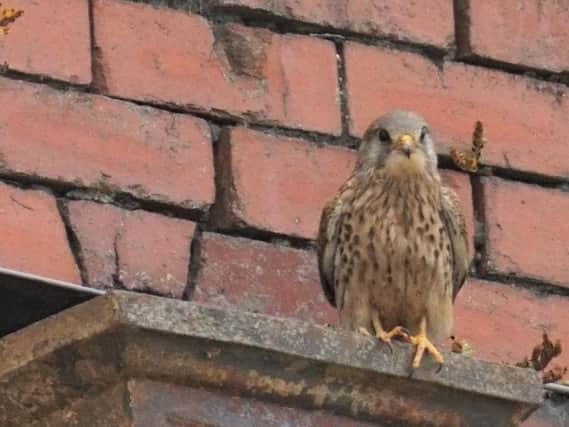Lancaster bird-lovers urgent call to protect nesting kestrels in derelict city building


A pair of kestrels have been observed showing breeding behaviour in a derelict building at Luneside Industrial estate in Lancaster.
Wildlife enthusiasts from Lancaster and District Birdwatching Society (LDBWS) are worried that demolition of the building will destroy the eggs or baby birds.
Advertisement
Hide AdAdvertisement
Hide AdDan Haywood, a member of LDBWS who carries out bird and wildlife surveys for a living, said: “Kestrels are a beautiful and iconic bird of prey famous for their hovering action in the air. Sadly, they are threatened nationally and internationally.


"To my knowledge this pair of kestrels is the only breeding pair for several miles around. It would be a tragedy if the building was demolished before their young had left the nest.”
Lancaster Green Party councillor for Marsh Ward Mandy Bannon has contacted Hurstwood, who own the building and asked them if they will respect the bird-nesting season and delay their work until after the birds have fledged in late summer.
She said: “I really hope the developers take a kind and responsible attitude to these very special birds – and allow the kestrels to finish breeding in peace before they carry out any further
demolition work to the building.”
Advertisement
Hide AdAdvertisement
Hide AdThe plea comes after the unauthorised work saw the removal of protected trees along the border of Freeman’s Wood last month.
This is being investigated by Lancaster City Council Planning department.
Since then, elsewhere on the industrial estate, two active linnet nests have been destroyed by digger work clearing bushes and brambles.
The linnet has also become uncommon in recent decades.
Dan Haywood said: "The loss of the linnet nests could have been avoided using best practice and due care. I truly hope that the developers will use best practice to protect the kestrels.”
Advertisement
Hide AdAdvertisement
Hide AdAccording to the Countryside and Wildlife Act 1981, it is against the law to disturb any breeding birds, their nests or young.
Kestrels are in the Amber List of Conservation Concern due to a decline in the UK breeding population.
Photo by Dan Haywood.
Comment Guidelines
National World encourages reader discussion on our stories. User feedback, insights and back-and-forth exchanges add a rich layer of context to reporting. Please review our Community Guidelines before commenting.